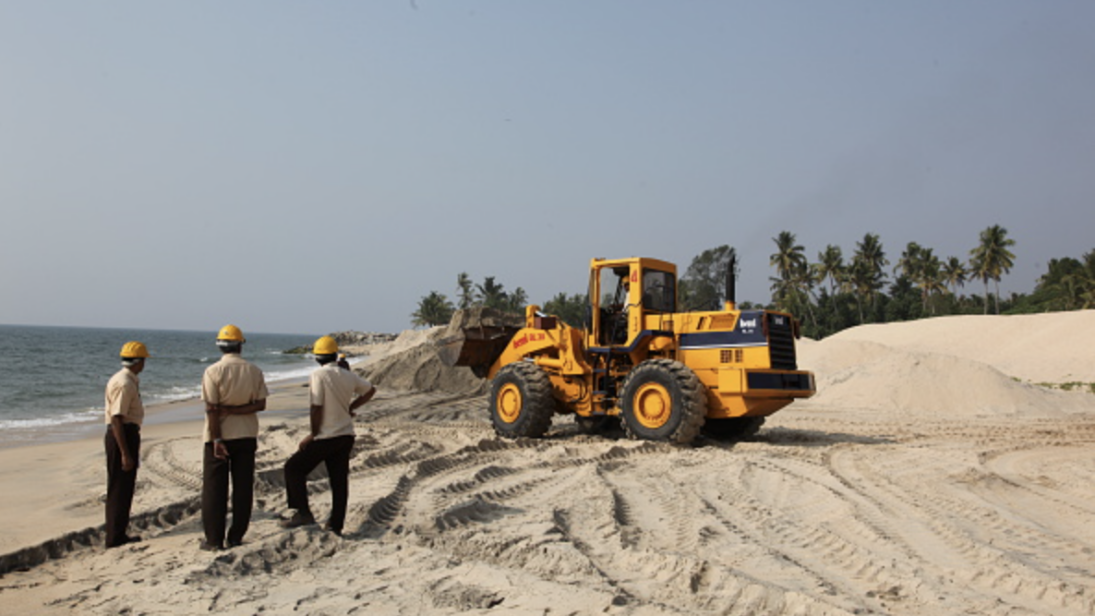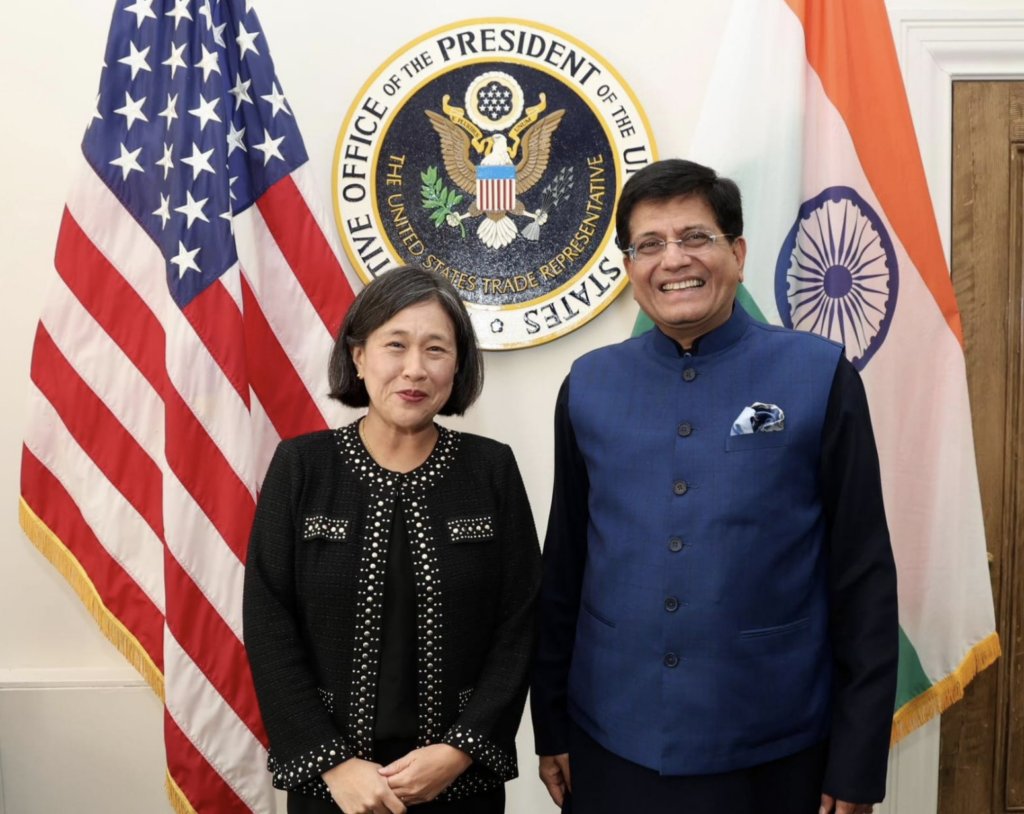
by Nayan Seth
On October 3, the United States and India announced a major agreement in one of the priority sectors for both countries – critical minerals supply chain cooperation. The two sides vowed to “expand and diversify” supply routes and leverage complementary strengths. The latest agreement underscores India’s potential as a major partner in the U.S.-led efforts to diversify away from China-controlled mineral supply chains.
Out of the expansive list of critical minerals, the two sides are exploring deeper collaboration in the Rare Earth Elements (REEs) sector, where Beijing currently enjoys a near-global monopoly. In the wider U.S.-China geopolitical competition, rare earths have emerged as a critical choke point due to their use in military applications and Beijing’s willingness to use its dominance to restrict access for political and strategic gains.
With the world’s fifth-largest reserves of rare earths, India could play a crucial role in reducing global overdependence on China and building a stable and diversified supply chain. However, at the moment, the country lags in all stages of rare earth development – mining, processing, refining, and magnet production. It also faces multiple challenges such as a lack of private capital, technology access, and environmental concerns.
To change course, the Indian government has attempted to streamline laws, encourage private investment, and foster bilateral and multilateral partnerships. However, the ambitious strategy that aims to simultaneously address the entire lifecycle of rare earths exploration and use requires a prioritization of objectives. Instead, the Indian government should focus on the twin goals of mining and processing of rare earths by building domestic capacity through international partnerships to raise the country’s share in a diversified and secure supply chain.
All Rare Earth Roads Go Through China
Rare earths comprise 17 minerals that are abundant in the earth’s crust. However, these rarely occur in concentrated form and generally have mixed deposits of iron, phosphate, copper, and gold. In India, rare earths are primarily found in beach sand deposits mixed with monazite, in states such as Kerala, Tamil Nadu and Andhra Pradesh.
REEs are deployed in a variety of critical sectors like defense, electronics, clean energy technologies, and electric vehicles. In military systems, they are used in jet engines, fighter jets, submarines, missile guidance systems, satellites, and GPS equipment. While China possesses over one-third of the world’s reserves, the country effectively controls upstream, midstream and downstream sectors. Though its production share is close to 70 percent, it has over 85 percent share of the processing and around 90 percent of the share for key finished products like permanent magnets.
The United States is dependent on China for over 70 percent of its rare earth consumption. For the EU, reliance on China for certain minerals is close to 100 percent. Despite their national security significance, Western governments and companies have struggled to escape China’s orbit of rare earths.
This concentration of rare earth power has provided Beijing a political weapon that it wields quite often. For instance, in 2010, China was accused of blocking rare earth exports to Japan for two months in retaliation for Tokyo arresting the captain of a Chinese fishing trawler near disputed islands. In December last year, Beijing announced a series of technology export bans related to mining, processing, and manufacturing of magnets on national security grounds.
Beijing’s dominance in rare earths and its ability to cut off access to these minerals that are used in strategic sectors have triggered policy responses from the United States, European Union, and Japan, resulting in several bilateral and multilateral agreements to reduce their reliance on China. India, too, has amended its mining laws and released a list of 30 critical minerals that it will prioritize for domestic mining and overseas access, which includes rare earths. New Delhi is also part of the 15-member group called the Minerals Security Partnership, an informal organization of largely rich nations to coordinate efforts on mineral diversification. India has also announced bilateral agreements with countries such as the United States and Australia. While these are welcome moves, significant challenges in India’s ability to exploit its reserves remain.
Rare Earths, Complex Challenges
Despite having around six percent of the world’s reserves, India produces less than one percent of the total share of rare earths. This is partly because a state-owned entity, the Indian Rare Earth Limited (IREL), has an effective monopoly on production, partly due to a ban on beach sand mining in 2019 due to rampant illegal activity. Since then, the government has approved only a selected list of private exploration companies to enter the rare earth market.
There are a handful of separation and refining facilities, the most notable being the joint venture between IREL and Japan’s Toyota Tsusho Corporation in the state of Andhra Pradesh. The downstream industries, such as alloy-making and magnets, are non-existent. Like other countries, India too heavily relies on China, with nearly 60 percent of the total imports of rare earths sourced from Beijing.
The Indian rare earth domestic industry faces several challenges such as lack of private capital, technical know-how, and environmental implications. The extended monopoly of IREL has dissuaded private sector participation and the government’s recent steps have not moved the needle much. Lack of technical expertise is a perennial challenge that has hindered the development of midstream capacity in the country. As rare earth mining and processing require large amounts of energy, and generate high quantities of toxic waste and radiation, protecting the environment while increasing the capacity remains tricky.
Charting Pathways to Success
To develop its rare earth capabilities and contribute meaningfully to the global supply chain, the Indian government should first prioritize its objectives for the sector. Instead of attempting to build an entire ecosystem with all stages of production, the focus could be on leveraging the country’s resources by expanding mining and processing. India already has a limited mining and processing capacity that could be scaled up through infusion of private capital and technology, utilizing bilateral and multilateral collaborations to do so.

India should look no further than its Quad partners – the United States, Australia, and Japan, who could each play a big role in resolving both financial and technological hurdles. For example, the latest bilateral Memorandum of Understanding (MoU) with Washington is a step in the right direction, as it mentions priority areas such as “identifying equipment, services, policies and best practices to facilitate commercial development” of both the U.S. and Indian mineral sectors. The two countries are also discussing critical mineral diversification efforts under the U.S.-India initiative on Critical and Emerging Technology (iCET). The United States, which is the second-biggest miner of rare earths after China, sees an opportunity for India to scale up its processing sector and is ready to support its development. Bilateral initiatives provide an opportunity for India to encourage U.S. private investments and technology transfers.
Similarly, India’s existing partnership with Australia on critical minerals should be expanded to include rare earths. Australia, the fourth-biggest rare earth producer in the world, has the technological edge and experience to assist India in spurring private investment and transfer of commercial-scale proven technologies.
Japan, too, is a valuable partner. After the 2010 Chinese embargo, Tokyo went on a war footing to reduce its rare earth reliance on China from 90 percent to 58. A major part of the campaign was to secure overseas deposits via huge financial infusion, along with technical and technological assistance led by its one-stop-shop government agency – Japan Organization for Metals and Energy Security (JOGMEC). The existing Japanese tie-up with IREL could be a guiding light for sharing best practices, technical know-how, and future Japanese investments in this sector in India.
India’s membership in the Minerals Security Partnership could also provide New Delhi with a platform to advance its domestic interests by attracting private capital and expertise. Similarly, India can make use of the Quad framework, which already focuses on critical minerals, to coordinate its rare earth priorities with member states. This would ensure a targeted approach and enhance efficiency.
Finally, bilateral and multilateral engagements should be complemented by streamlining domestic regulations, intensifying state-led investments in R&D, especially in the processing sector, and promoting private investment in mining and processing with adequate environmental safeguards. The Modi government at the center should also reach out to the states to align its objectives with their priorities and ensure an investor-friendly ecosystem.
While blessed with rare earth endowments, India faces multiple challenges in becoming a crucial player in the rare earth industry. However, it has the potential to become a significant mining and processing source in the global rare earth supply chains, while achieving its stated objective of self-reliance in one of the most critical strategic sectors. If not done right, India’s dependence on China for rare earths could prove costly in a future contingency.
The global call to develop diversified supply chains has put India on the map. With existing support from international partners and friends, the time is now for India to move and move fast.
source : southasianvoices
